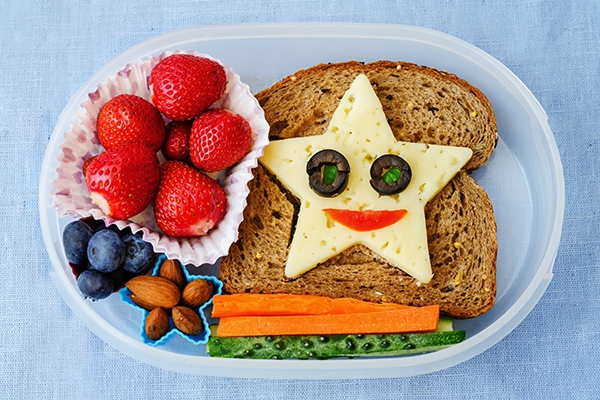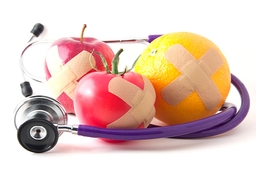Choosing Healthy Snacks for Your Kids

Cilok, cilor, penthol, sausage, tempura, donuts, banana chocolate crips, ice grass jelly .... These are just a handful of the snacks that students eat during school. Perhaps one of them will become your child's favorite! Please keep in mind that several snacks are high in salt, sugar, and fat.
Choosing snacks for children is both easy and challenging. On the one hand, we want healthy snacks to support their growth and development. On the other hand, healthy snacks are usually less attractive to children because they have an ordinary appearance and a bland flavor.
As parents, we want to provide the best for our children. However, the temptation of modern snacks with great flavors and appealing colors often makes your little one prefer these snacks.
How can I ensure that my children are eating healthy snacks?
- Prepare snacks at home to ensure that they are free from harmful ingredients and meet the nutritional needs of your children.
- Make healthy snacks visually appealing by using interesting shapes and colors to pique children’s interest.
- Involve children in making their snacks to help them understand the importance of healthy foods and generate excitement about eating them.
- Educate children about the benefits of healthy snacks and the risks associated with consuming unhealthy snacks.
- Provide snacks at home to prevent children from consuming unknown or harmful ingredients commonly found in cheap snacks. For instance, borax, formalin, rhodamine B, and textile dyes like methyl yellow can be harmful if consumed regularly.
Characteristics of unhealthy snacks

1. High sugar
Who doesn't enjoy sweets, biscuits, donuts, or banana chocolate crips? Their sweet taste attracts children to keep eating them. Unfortunately, despite their sweetness, many sweet foods are high in artificial sugar, usually fructose. This type of sugar may increase the risk of diabetes and obesity. Sugary food can easily damage children's teeth.
According to data from the Indonesian Doctors Association (IDI), as of January 2023, the prevalence of diabetes cases in children has increased 70 times compared to 2010. One of the causes is unhealthy eating behavior, such as consuming trendy snacks with unknown nutritional value, as well as a lack of physical activity.
2. High salt and fat
Who doesn't enjoy eating chiki or chips? The sweet and crispy flavor makes children addicted.
However, these processed chips are deep fried in oil and contain a high salt content as well as trans fat. Long-term consumption of salty foods may increase the risk of cardiovascular disease, such as hypertension. Several studies have also shown a link between consuming high-salt diets and an increased risk of stomach cancer.
In general, children’s hypertension ranges from 1–2%. The incidence is influenced by several factors: the increasing incidence of obesity/overweight and changes in lifestyle, such as lack of activity, excessive use of gadgets or excessive watching television, as well as high-calorie and high-salt food intake.
Children with hypertension have four times the risk of suffering from hypertension as adults than normal children.
3. Contains addictive substances
Please be cautious with street food, such as cilok, cilor, penthol, and their companions. These foods can easily accumulate dust, dirt, and even bacteria, including Campylobacter, Clostridium difficulelle, Escherichia coli, Salmonella, and Shigella, which may lead to food poisoning and symptoms such as diarrhea.
It seems like the snacks above will taste more delicious if you dip them in sauce. Unfortunately, because the selling price is cheap, some sellers may use sauces with unsafe synthetic dyes and excessive preservatives, which can negatively affect your children's health.
Healthy snacks

Healthy snacks are nutrient-rich snacks to meet children's nutritional needs. Healthy snacks should contain macronutrients, such as carbohydrates, fats, and proteins, which are important for children's growth and development.
How do you ensure your child eats healthy snacks? Here are some tips that can help.
1. Choose snacks that are safe, clean, and cooked thoroughly
Teach children to select clean snacks that are cooked thoroughly and do not have a rotten or sour smell.
It is important to choose a location and seller that maintains cleanliness. For example, if the vending location is not near a garbage dump or ditch, and the seller uses gloves to handle food or washes their hands after accepting payment.
2. Avoid brightly colored snacks
Encourage your children to avoid foods with bright colors, strong flavors, or strong odors, as these snacks often contain preservatives that can be harmful to children’s health.
Food with a high taste often contains added MSG (monosodium glutamate). In some children who are sensitive to MSG, consuming it can lead to symptoms such as nausea, vomiting, headaches, and chest pain.
3. Limit your consumption of fast food and snacks
Fast food is high in salt and fat but low in fiber. This can lead to obesity and hypertension.
Teaching kids to limit their intake of such food and choose healthier snacks is crucial.
4. Read the labels
Encourage children to always read the labels on the packaging before choosing food. At least the food's expiration date and halal certification.
5. Wash your hands
Maintain hygiene by washing your hands before and after eating. It is crucial to keep children safe from dangerous germs or contamination that can cause disease.
Choosing healthy snacks for children requires additional effort, but with creativity and patience, we can provide the best to our children and help them develop healthy eating habits.



